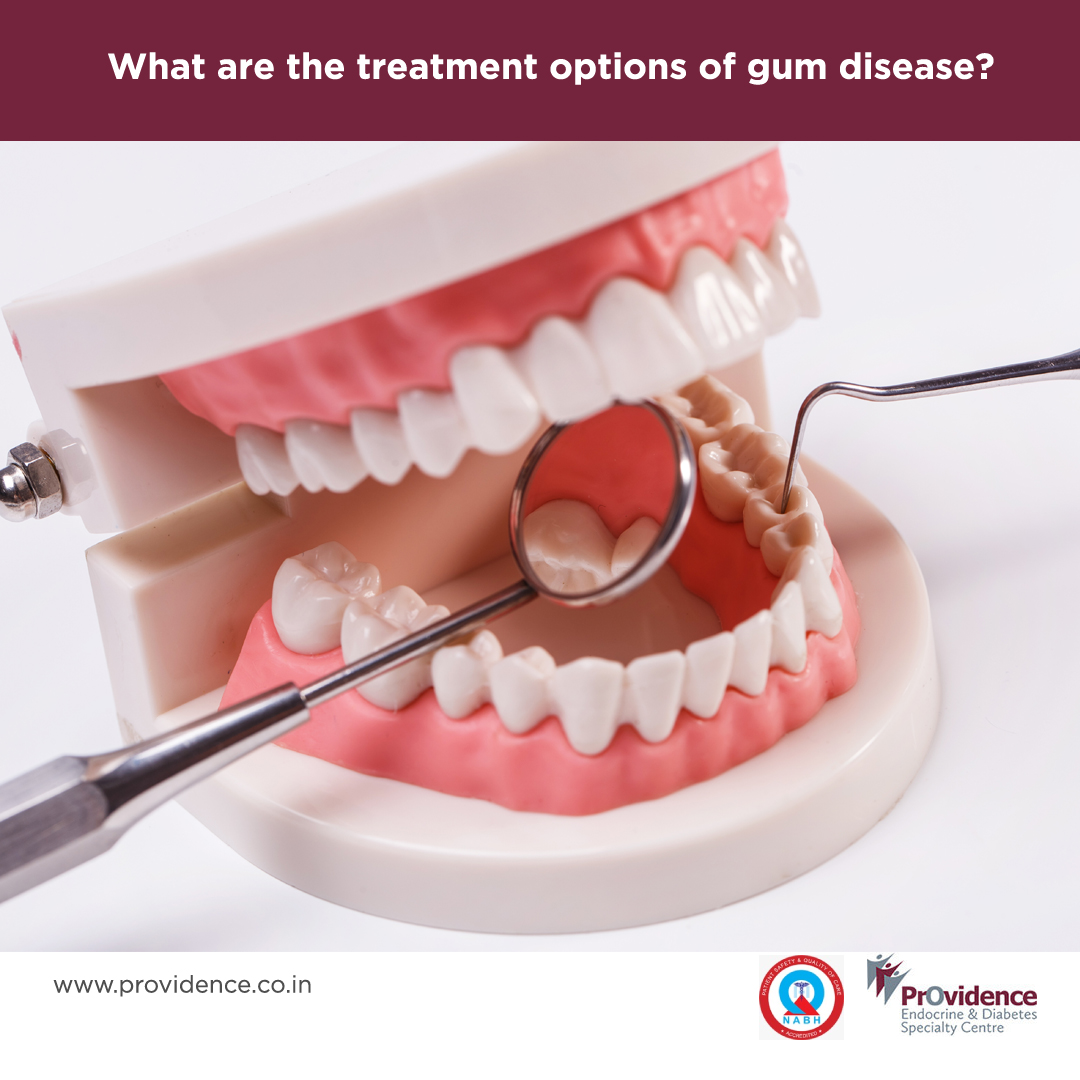There are a variety of treatments for gum disease depending on the stage of disease, how you may have responded to earlier treatments, and your overall health. Non-Surgical treatments for gum disease include dental cleaning. During this procedure, dentist will remove the deposits from the teeth. It is recommended to do once in every 6 months. Sometimes deep cleaning along the root surfaces is also required to remove deposits under the gums. In most initial cases, cleaning is all needed to treat gum diseases.
Surgery is needed when the tissue around the teeth is unhealthy and cannot be repaired with nonsurgical options. Of this, most common is Flap surgery where the gums are lifted back and the hardened deposits are removed. The gums are then placed back so that the tissue fits firmly around the tooth. This method reduces the size of space between the gum and tooth, thereby decreasing the areas where harmful bacteria can grow.
Painless Laser treatment for gum disease is the latest treatment option. In this a periodontist uses a laser to access and remove the inflamed gum tissue from around your tooth’s root causing minimal post-operative discomfort.



